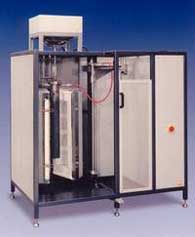| | |
| |
|
Technique for determining lump coke reactivity in carbon dioxide gas at elevated temperatures and its strength after reaction in carbon dioxide gas by tumbling in a cylindrical chamber referred to as the ‘I - tester’. When coke lumps descend in the blast furnace, they are subjected to reaction with countercurrent CO2 and to abrasion as they rub together and against the walls of the furnace. These concurrent processes physically weaken and chemically react with the coke lumps, producing an excess of fines that can decrease burden permeability and result in increased coke rates and lost hot metal production. This test method is designed to indirectly measure this behaviour of coke in the blast furnace. A dry coke sample of designated size and origin is reacted with CO2 gas in a retort at a specified elevated temperature for a specified length of time. Two indices, coke reactivity index (CRI) and coke strength after reduction (CSR) are determined using the reacted coke residue. The weight retained after reduction determines the CRI. |
The weight retained after sieving the tumbled reacted coke in a designated number of revolutions over a designated turning rate determines the CSR.
|
